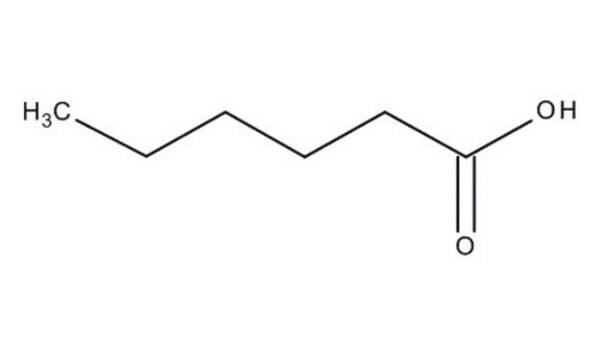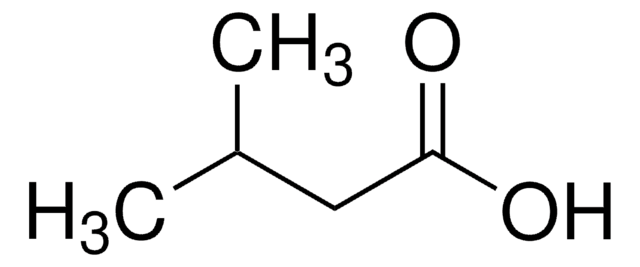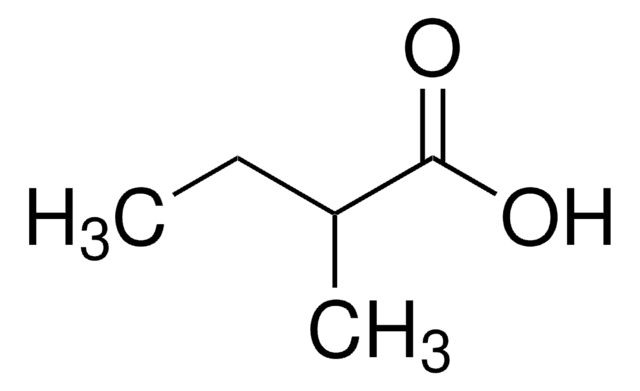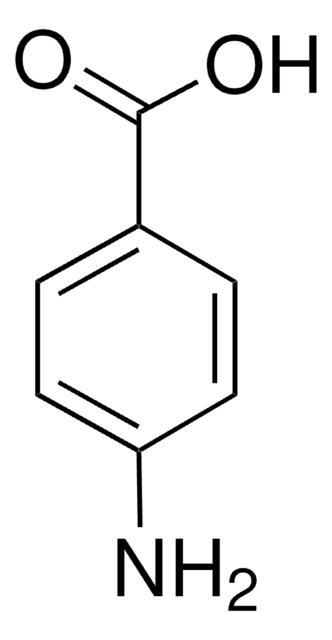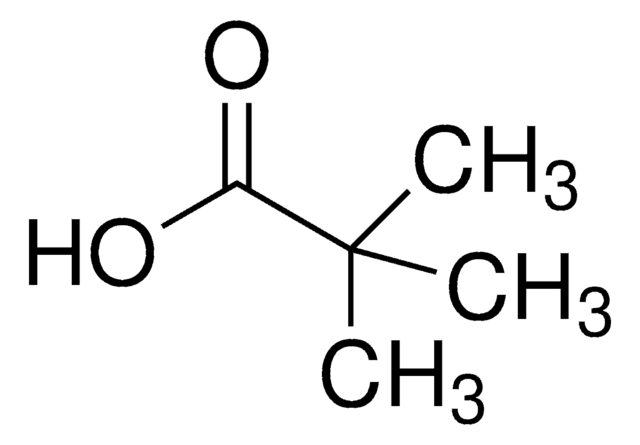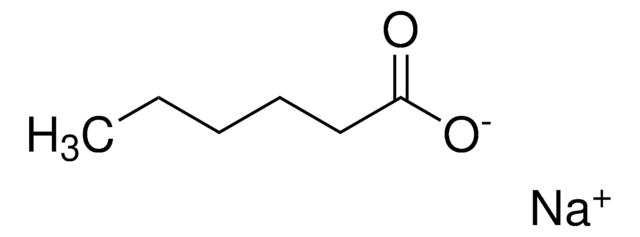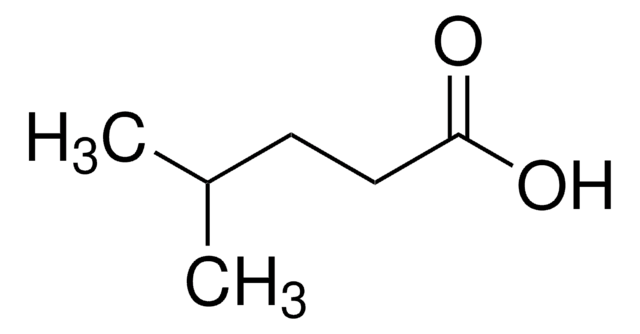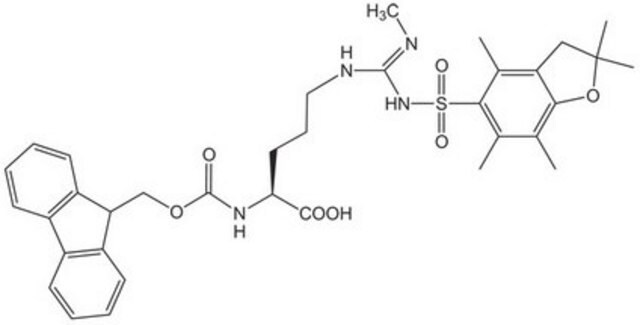153745
Hexanoic acid
≥99%
Sinônimo(s):
Acid C6, Caproic acid
About This Item
Produtos recomendados
densidade de vapor
4 (vs air)
Nível de qualidade
pressão de vapor
0.18 mmHg ( 20 °C)
Ensaio
≥99%
forma
liquid
índice de refração
n20/D 1.4161 (lit.)
pb
202-203 °C (lit.)
pf
−4 °C (lit.)
solubilidade
H2O: slightly soluble
diethyl ether: easily soluble
ethanol: easily soluble
densidade
0.927 g/mL at 25 °C (lit.)
grupo funcional
carboxylic acid
Organoléptico
pungent
cadeia de caracteres SMILES
CCCCCC(O)=O
InChI
1S/C6H12O2/c1-2-3-4-5-6(7)8/h2-5H2,1H3,(H,7,8)
chave InChI
FUZZWVXGSFPDMH-UHFFFAOYSA-N
Procurando produtos similares? Visita Guia de comparação de produtos
Descrição geral
Aplicação
- To prepare polyethylene glycol derived nanomicelles as a non-viral gene carrier.
- As a starting material to synthesize an amino acid L-norleucine.
- As a reactant to prepare 4-methoxy phenyl hexyl ketone through Friedel−Crafts acylation of anisole using Hβ zeolite-based catalyst.
- As a template in the preparation of highly conducting thin polypyrrole coated alumina composite particles.
Palavra indicadora
Danger
Frases de perigo
Declarações de precaução
Classificações de perigo
Eye Dam. 1 - Skin Corr. 1C
Código de classe de armazenamento
8A - Combustible corrosive hazardous materials
Classe de risco de água (WGK)
WGK 1
Ponto de fulgor (°F)
215.6 °F - closed cup
Ponto de fulgor (°C)
102 °C - closed cup
Equipamento de proteção individual
Faceshields, Gloves, Goggles, type ABEK (EN14387) respirator filter
Escolha uma das versões mais recentes:
Já possui este produto?
Encontre a documentação dos produtos que você adquiriu recentemente na biblioteca de documentos.
Os clientes também visualizaram
Protocolos
In this study, SPME was used for the analysis of free fatty acids in Parmesan cheese using a 65 μm Carbowax/divinylbenzene (DVB) SPME fiber. Headspace extraction of the cheese sample was conducted at 65 °C for 15 minutes and analyzed by GC with FID detection. SPME is ideal for analyzing the volatiles associated with solid food samples. The phase chemistry of the Nukol GC column provides excellent peak shape of acidic compounds.
Nossa equipe de cientistas tem experiência em todas as áreas de pesquisa, incluindo Life Sciences, ciência de materiais, síntese química, cromatografia, química analítica e muitas outras.
Entre em contato com a assistência técnica
